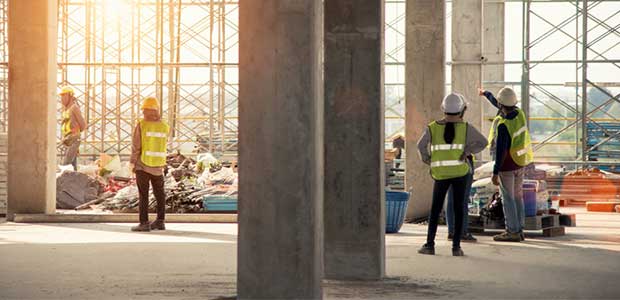
Walk the Line: The Importance of Fence Line Monitoring in Construction
Establishing a system of effective perimeter monitoring is essential to the success of construction projects.
- By Tim Turney
- Oct 01, 2020
Establishing any new construction project is a careful logistical balancing act, with many aspects for project managers to consider; from site safety to environmental responsibility. Establishing perimeter, drawing up necessary documentation, ordering materials, creating traffic plans, workflows and conducting risk assessments—a lot of thought and planning goes into even relatively small footprint construction projects.
Unfortunately, aspects of site start up can become overlooked, the balance between “short term gain and long-term pain” prioritizing actions that will get the site functioning and have contractors doing what they do best—building. One aspect that may be overlooked, and thus lead to potential “long-term pain” for the project, is establishing a system of effective perimeter monitoring.
Measuring Site Emissions
In an ideal world, projects would occur in a “bubble” that excess levels of dust, noise or vibrations could not escape. Site neighbors would be unaffected, governing authorities would have no reason to visit and the site’s social responsibility would be unaffected. Unfortunately, this is not an ideal world.
There is a civic and legal responsibility to measure site emissions, backed by governing authorities. In the U.S., under CAMP (Community Air Monitoring Plan), dust and Volatile Organic Compounds (VOCs) are reported on, and action taken if limits are exceeded—sites should be able to show compliance and maintain their reputations, and local communities must be considered.
While establishing a method for measuring site emissions may seem initially daunting, either due to a lack of clarity in which legal guidelines sites will have to follow to remain compliant or the research and paperwork involved in establishing a monitoring program, once an effective process is in place the same plan can be implemented for each and every new site or project.
Choosing an Effective Program
There are two main methods for conducting monitoring: employ a third party consultant to establish a program, or use fence line monitoring equipment. The first can add considerable expense to a project budget depending on the type and duration of works, in some cases costing up to $500 an hour for the inspector’s time alone. The second can cost considerably less, either by hiring the equipment, or purchasing outright as an investment in future projects.
When making investments in monitoring technology, a choice can be made between employing individual units to monitor separate potential hazards, or selecting a combined monitoring solution. Financial and efficiency savings can be made by using a combined solution that packages several environmental monitors together, such as the Casella Guardian2 fence line monitor, which brings together various combinations of dust, noise and vibration monitoring equipment in a single enclosure. By employing a combined monitoring solution, safety managers only need to check a single unit or combined data report, a more efficient method than checking multiple monitors and data sources.
Once powered, such low intervention units can be left to enact monitoring 24/7, without the need for physical interaction. Reports can be sent remotely via email and if site limits are exceeded, alerts can be sent by SMS, allowing sites to monitor levels around the clock and react quickly to reduce levels of dust or noise that exceed set limits and mitigate potential negative outcomes. Such remote monitoring is more important now than ever before as we see work pressing forward in a post-coronavirus environment.
Constant Source of Monitoring
Combined monitoring solutions offer operators a great deal of flexibility, as they can be easily relocated as fence lines change or redeployed to new projects. Having a constant source of monitoring data gives projects a safety net in terms of accountability. Data is always on hand to prove that sites have been compliant, vital when dealing with potential complaints from site neighbors or spot-visits from environmental officers. In the event of emissions exceeding prescribed limits, operators can use alerts and reporting to assess the cause and mitigate the effects, changing workflows, equipment usage and engaging proactively with the community and legislative bodies to outline plans to reduce or prevent limits from being exceeded again.
While fence line monitoring is not among the first considerations taken when establishing a new construction project, it is a vitally important part of the site safety ecosystem. Delivering peace of mind through constant monitoring and accountability with accurate, accessible data capture, though they might not be a project manager’s first thought, they should certainly never be an afterthought.
This article originally appeared in the October 2020 issue of Occupational Health & Safety.